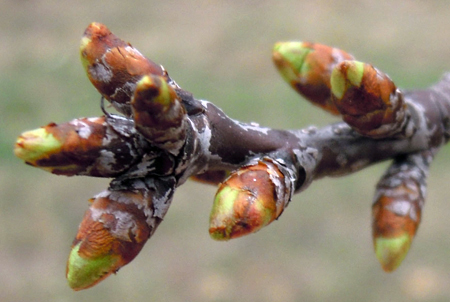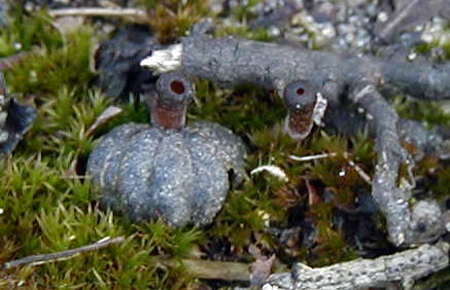Southwest Michigan fruit update
Fruit growers alert as spring finally arrives with a warm weekend.
Forsythia is blooming. Warmer weather Sunday jump-started growth in fruit crops. Highs Sunday were in the 80s. There little chance of rain until the end of the week and lows will be above freezing. High will be near 60 and lows near 40. Check for the closest weather station at: enviroweather.msu.edu. There are many fruit related prediction tools on Enviro-weather.

Photo 1. Montmorency tart cherry buds at green tip.
Tree fruit
Buds are swollen. As fruit buds develop, they become more susceptible to freezing injury. At this stage, overnight lows in the 20s can cause damage to the most advanced fruits. We are into the delayed dormant window for oil sprays. This is a good time to get these sprays on when lows will be above freezing for the foreseeable future.
Apricots are at red tip and can withstand 22°F with little damage.
Peaches are at bud swell and can withstand temperatures below 20°F. There is still time to apply materials such as ziram or chlorothalonil to reduce, but perhaps not completely suppress leaf curl symptoms. Copper programs to suppress bacterial spot on disease prone sites and varieties can start now.
Sweet cherry buds are green side to green tip and would be damaged by temperatures below 25°F. Tart cherries buds are at green tip and will be damaged at 26°F.
In plums, Japanese plums are well advanced at tight cluster. European plums are at the beginning of white side.
Apples are at green tip to early tight cluster, depending on the variety, and are now susceptible to apple scab. Growers can use the scab infection tool on MSU’s enviroweather website to track infection periods. Use of copper to help suppress fire blight should go on before tight cluster in order to minimize russet.
Pears are beginning to swell and pear psylla are out when warm weather returns.
Small fruit
Grapes are breaking dormancy. Pruning cuts are bleeding and some buds are at scale crack in Concord and Niagara. Some advanced varieties are at the beginning of early swell. Vinifera grapes are less advanced. There is still time to make an application of copper or sulfur to help reduce disease inoculum of phomopsis, if it was a problem last year.

Photo 2. Mummy berry mushroom (apothecia) emerging from a mummy.
Blueberry flower buds are swollen and leaf buds are moving. The most advanced leaf buds at the tips of the shoot have about 1/8 inch of green tissue exposed. Mummy berry apothecia are emerging from the mummies and will soon be releasing spores. Growers need to be prepared to protect against mummy berry shoot blight.
Strawberries have new leaves out and more emerging from the crown. The flower trusses are not yet visible. With the flowers in the ground, strawberries can easily withstand temperatures below 10°F.
Brambles have about ¼ inch of green tissue is showing. Applications of lime sulfur will help reduce anthracnose in plantings were this disease is a problem.



 Print
Print Email
Email
